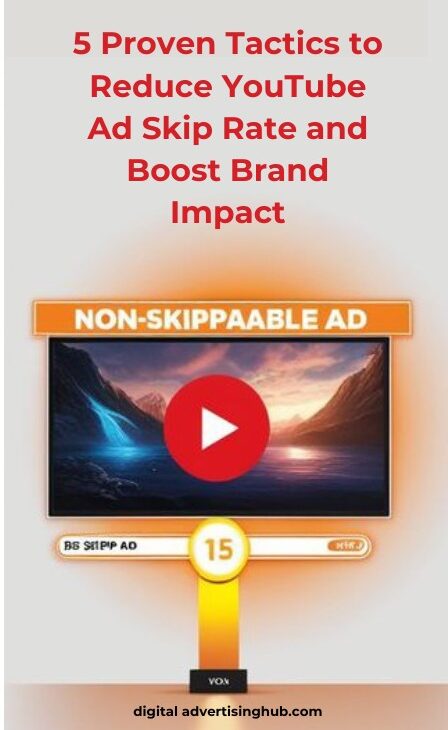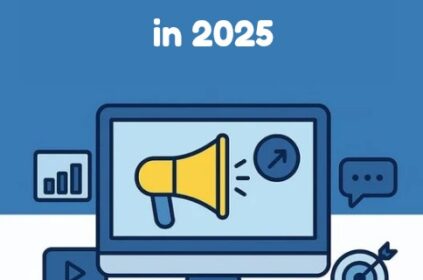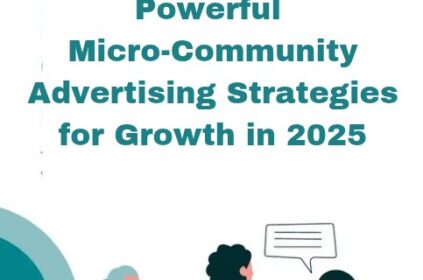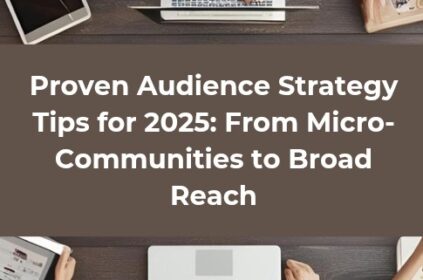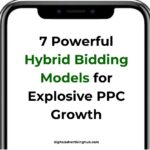Skippable ads aren’t the problem — forgettable ones are.
The brands that win on YouTube aren’t the ones who beg for attention.
They’re the ones who earn it — who understand how to transform those five seconds before a skip into a spark that sticks.
Because when you design for interruption instead of fearing it, your ads stop feeling like ads at all.
This is where the new generation of YouTube marketers is playing. They’re not fighting the skip button — they’re mastering it.
They’ve learned to turn fleeting moments into measurable wins, where brand recall soars, engagement deepens, and audiences actually want to keep watching.
Let’s break down the 7 powerful hacks that make that possible — practical, proven ways to reduce YouTube ad skip rate and turn those “skippable” seconds into your most valuable brand weapon.
Why Viewers Skip (and Why It Matters)

Understanding what drives someone to skip is essential. Most skippable YouTube ads allow the user to bypass the ad after five seconds.
In that short window, the ad must arrest attention—or risk being ignored entirely.
Studies have found that in many campaigns, the skip rate hovers in the 50–60 percent range for standard skippable ads.
That means over half of your potential audience could abandon your message before you even get started.
In more extreme environments, research suggests as high as 65 percent skip rates for video ads in general.
Compounding the problem: a paper titled Do Interruptions Pay Off? found that intrusive or interruptive ad placements can reduce consumers’ willingness to pay for the associated brand’s products.
In other words, if your ad feels jarring, people may not just skip—they may actively distrust or devalue the brand.
Yet the challenge also contains opportunity. If you can reduce YouTube ad skip rate meaningfully, you can preserve more of your creative, extend reach, and improve conversions and brand metrics.
Why is this so critical?
Because many marketers today are measured not by impressions but by deeper impact—brand lift, conversions, and engaged audiences.
YouTube positioning itself as a better ROI vehicle than TV likewise pressures you to show results.
Benchmarks reinforce this: YouTube ad view rates average around 31.9 percent (views divided by total impressions) in many industries.
That means your ad must compete not just on relevance, but on hook and retention.
Reducing skip rate directly improves the portion of impressions that turn into meaningful view-throughs or interactions.
When you reduce YouTube ad skip rate, you gain more efficient use of budget and greater chance for message retention.
#1. Optimize Hook in First Five Seconds
Because viewers can skip after five seconds, your opening must do heavy lifting.
A weak entry almost guarantees abandonment. To reduce YouTube ad skip rate, the ad’s first moments must earn the right to hold attention.
Crafting an Immediate Hook
Use bold visual contrast or urgency in the very first frame. Show the product or brand name early.
Start with a question or provocative statement that makes the viewer care. Avoid generic intros like “Hi, my name is …” or long establishing shots.
Leverage pacing and audio cues to anchor interest—e.g. a snap, cut, beat drop, or voiceover cue.
The point is, don’t waste the first seconds.
According to a study, 59 percent of millennials watch until the skip option appears, meaning they at least endure the first five seconds. If your hook fails there, you lose them.
Align Hook With Relevance
Beyond the visual or audio flair, the opening must resonate with the audience’s context. Use targeting signals to reflect their world—pain point, curiosity, or identity.
If your ad aligns with what they care about, they’re more likely to endure. That alignment helps reduce YouTube ad skip rate by increasing emotional or cognitive relevance.
Example
Imagine a skincare brand targeting viewers concerned about dark spots.
A strong first five seconds might show a close-up of uneven skin, text overlay “Fade spots in 7 days?”, and a voice saying “Do you avoid mirrors?”
That combination immediately signals relevance and stakes, increasing the chance the viewer stays.
By tightening your hook and relevance early, you accomplish the first step to reduce YouTube ad skip rate. Your message earns the chance to unfold.
#2. Shorten & Structure for Retention
Long, meandering ad narratives are risky—they give viewers many chances to bail. To reduce YouTube ad skip rate, lean toward brevity and efficient structure.
Ideal Lengths & Format
Skippable ads can run up to six minutes, but real performance tends to drop after 60–90 seconds. In practice, many high-performing ads land between 15 and 60 seconds. Keep it tight.
Segment the ad: hook (0–5s), value points (5–20s), call to action (final 5–10s). Avoid lengthy backstory or exposition. Every second should push toward a decision.
Use Visual Variety
Don’t stay static. Change angles, switch cuts, insert motion. This keeps visual momentum and reduces fatigue. A lean, fast-paced visual flow is more likely to survive.
Reduce Redundancy
Every message should feel essential. If you find overlapping claims, consolidate or drop. You don’t need to list ten features. Pick one or two most compelling ones and stick to them.
By compressing and structuring purposefully, you diminish the number of moments the viewer might choose to skip. That directly helps reduce YouTube ad skip rate.
#3. Lead With Value, Not Brand
When the ad immediately starts with your logo or brand name, many viewers already know you’re “just selling.”
That predisposition can lead to skipping. A better path is to lead with value or emotion, then bring in your brand.
Front-Load the Benefit
Start by showing what’s in it for the viewer: solve a problem, entertain, surprise, or educate. Then shift to how your product or solution delivers.
This sequencing gives the viewer a reason to care before they realize it’s an ad.
Delay Explicit Branding
Hold your brand mention until after you’ve delivered value. This tactic gives the audience a better chance to engage before realizing they’re being sold.
That subtle shift can reduce YouTube ad skip rate by lowering early resistance.
Use Social Proof or Context
Once you’ve created a hook and shown value, reinforce it with trust signals—testimonials, metrics, user results. But weave them organically—not as afterthoughts. This can sustain attention deeper into the ad.
Over time, when more viewers stay through early skepticism, the portion of impressions converting into meaningful interactions rises. That means your campaign delivers stronger ROI.
#4. Precise Targeting & Audience Segmentation

Even a perfect creative struggles if shown to the wrong audience. To reduce YouTube ad skip rate, your targeting must be laser-focused so each viewer sees something relevant.
Use Interest, Behavior & Demographic Layers
Layer demographic (age, gender) with interest and behavior targeting (e.g. “skin care enthusiasts,” “fitness gear buyers”). The more signal matches, the more likely your opening resonates, lowering skip intention.
Leverage Retargeting
People who’ve visited your site or interacted with your content already have higher intent and familiarity. Serving your ads to them increases relevance, making it easier to reduce YouTube ad skip rate.
Exclude Low-Intent Audiences
Exclude audiences or placements known to produce high skip behavior (non-relevant categories, broad placements). Prune where the ad is unlikely to resonate.
Use Frequency Caps
Don’t overexpose the same ad to the same viewer. Excessive repetition breeds fatigue and skip behavior.
Capping frequency helps maintain freshness, thereby supporting efforts to reduce YouTube ad skip rate.
Targeting isn’t just about higher conversion—it’s the first line of defense when striving to keep viewers engaged.
#5. Iterate with Data & Creative Testing
Even the best guess at creative, targeting, and structure will need refinement. To continually reduce YouTube ad skip rate, make creative testing and data feedback a core part of your workflow.
A/B Test Hooks, Lengths & Variants
Run variants with alternative openings, durations, and messaging.
A slight tweak in the first 5 seconds might yield a big drop in skip. Use the data to lean into better variants that reduce YouTube ad skip rate.
Monitor Skip Metrics & View Curves
Track at what timestamp viewers skip. Identify drop-off spikes. Use that insight to revise content after those moments. For instance, if many skip at 10 seconds, tighten or reprioritize content in that zone.
Combine Brand Lift & Conversion Analytics
Don’t just optimize for skip rates. Tie in brand lift measurement (via YouTube Brand Lift studies) or incremental conversions.
That way, optimizing to reduce YouTube ad skip rate doesn’t hurt the ultimate goals of awareness and sales.
Use Automated Rules
Set rules to pause or redirect underperforming variants (e.g. if skip rate > 60 % or view rate < baseline). This ensures weaker creatives don’t drag down overall performance.
Scale What Works
Once variants show strong retention performance, scale them, iterate further, and kill off underperformers. Over time, each campaign can reduce YouTube ad skip rate more than the last.
Testing should never be occasional—it should be built into every campaign to continuously improve retention.
Turning Skippable Moments into Wins
Reducing skip rate is not the only goal. Your real objective: convert that retained attention into brand outcomes—sales, lift, or deeper engagement.
Here’s how to bridge that gap.
Use Mid-Roll or In-Stream Extensions Wisely
If viewers stay past your initial hook, consider mid-roll “value still to come” teasers—short transitions or recap flashes.
This reminds watchers there’s reward for staying, helping retain them through the ad. Careful design is key—poor transitions can backfire.
Research suggests that mid-roll ads often produce stronger brand name recognition than pre- or post-roll placements when well integrated.
By structuring an ad that teases later content, you keep viewers in the narrative longer.
Call-to-Action Timing & Reinforcement
Don’t relegate your CTA only at the end. Reinforce the call with a soft prompt earlier—“see more in 20 seconds,” or “stay tuned.” That gives reason to persist. But the final ask should remain clean, direct, and low friction.
Use Sequential Messaging
If your campaign uses multiple ad slots (e.g. YouTube and display), create a narrative that continues across touchpoints.
The initial ad reduces skip, the next provides deeper proof, the final invites action. This continuity compounds attention and results.
Leverage UGC or Social Proof Assets
Authentic user content or testimonials can sustain attention because they feel organic. Use real stories or clips (with rights) within your ad.
These elements reinforce credibility, keeping skeptical minds engaged longer, which helps reduce YouTube ad skip rate.

Repurpose Top-Performing Creative
Creative that demonstrates strong retention should be repurposed across channels: email, social, display.
That amplifies reach without reintroducing a skip barrier. The more your best content is seen, the more it contributes to brand performance.
By aligning retention efforts with deeper objectives, you turn skippable moments not into losses—but into windows of brand impact.
Case Study: Turning YouTube Ads into Real ROI
Consider the example of Indestructible Shoes, an e-commerce brand seeking to scale with YouTube ads.
They initially tested Facebook-based creatives on YouTube and saw poor performance. Their first month’s ROAS was only 0.48x, largely due to lack of strong YouTube-specific creative or targeting.
They then shifted to a structured process:
#1. Revised hooks in the first 5 seconds to emphasize shock/benefit
#2. Shortened ad duration
#3. Targeted onlookers of relevant content, excluded non-interest groups
#4. A/B tested logo timing and progression
#5. Pruned low-retention variants
Within subsequent campaigns, they achieved a ROAS of 2.24x and drove over $1.16M in sales.
By reducing waste from high skip segments, more of their budget went to engaged views, lifting conversion yield.
That illustrates how focusing on reducing skip behavior can directly influence bottom-line performance.
Common Challenges & Solutions
Even with strong tactics, obstacles will arise. Here’s how to navigate them while staying on course to reduce YouTube ad skip rate.
Challenge: High skip despite good targeting
If you still see high skip rates, revisit your creative. A relevant audience doesn’t guarantee engagement—if the hook or message doesn’t land, retention suffers. Run additional variants, test stronger emotional triggers, or pivot messaging.
Challenge: Creative fatigue
Even good creatives lose novelty. Use rotation of variants, refresh elements (colors, visuals, voice), and manage frequency caps to avoid burnout. This helps maintain retention over time.
Challenge: Pressure to scale too soon
Scaling before validation often magnifies inefficiencies. Instead, first optimize retention and reduce YouTube ad skip rate at low scale. Once metrics stabilize, scale gradually.
Challenge: Attribution and uncertainty
Some stakeholders question whether retained views translate into real business. Use lift studies, incrementality testing, or backend conversion matching to prove performance. That validates your push to reduce YouTube ad skip rate.
Challenge: Platform changes
YouTube periodically updates ad formats and placement rules, which can influence skip behavior. Keep monitoring platform documentation and shift versions proactively. Being agile helps you stay ahead of rising skip risk.
Persistence, measurement, and adaptation are your tools.
Integrating Skip Reduction into Your Campaign Workflow
To make reducing YouTube ad skip rate systematic, embed the practice into your campaign workflow:
#1. Brief & Creative Planning – prioritize hook-first, value-led structure.
#2. Audience Strategy – define precise segments, exclusion rules, and frequency caps.
#3. Variant Development – build multiple hook / length / brand placements.
#4. Launch & Test – monitor skip metrics, view curves, drop-off timestamps.
#5. Iterate & Refine – pause poor variants, reallocate budget, update creatives.
#6. Scale & Expand – roll best performers; consider sequential messaging across channels.
#7. Measure Outcomes – tie retention improvements to conversions and lift.
By institutionalizing skip-rate focus, each campaign becomes better than the last, compounding your ability to turn skippable YouTube moments into brand wins.
Reducing skip behavior is not easy, but it’s essential. With disciplined creativity, precise targeting, and relentless testing, you can tilt the balance in your favor—preserving more attention, enhancing conversions, and turning skippable moments into real brand momentum.
Conclusion
Every marketer dreams of attention that lasts — but on YouTube, it’s the attention you earn fast that truly counts.
Those first five seconds before a skip aren’t wasted time; they’re your pressure cooker.
They reveal whether your brand understands its audience, respects their space, and knows how to say something that matters — fast.
The truth is, people don’t skip ads; they skip irrelevance.
And that’s your opening. Every frame, every beat, every micro-story can shift perception, stir emotion, and spark connection.
When you build for that — when you make the viewer feel seen instead of sold to — the skip button loses its power.
So, don’t chase perfection or gimmicks. Chase resonance.
Craft ads that make people pause, not because they have to, but because they want to.
That’s how you win the YouTube game — not by avoiding interruptions, but by turning interruptions into impact.

